TRL
Research Interest of our group focuses on following directions
1. New concepts of high-efficient thermoelectric materials linking synergic transport of heat and electricity.
AES-MPS concept
AES-MPS concept is an in-depth investigation on new approach to thermoelectric composite materials. In particular we focus on proper selection and modification of composite components in a way that will result in (1) reduction of thermal conductivity without any quantum effects and (2) maintaining or even enhancement of electrical properties due to band structure engineering of the semiconductor-semiconductor junction.
DT-FGTM concept
The DT-FGTM concept is aimed to improve the efficiency of thermoelectric conversion through fine tuning of the local properties of a thermoelectric leg to a specific working temperature. As a result an increase of the average ZT value should be achieved. The way to achieve this goal is to tune the bandgap and the Fermi level position of a material by two different kinds of dopants.
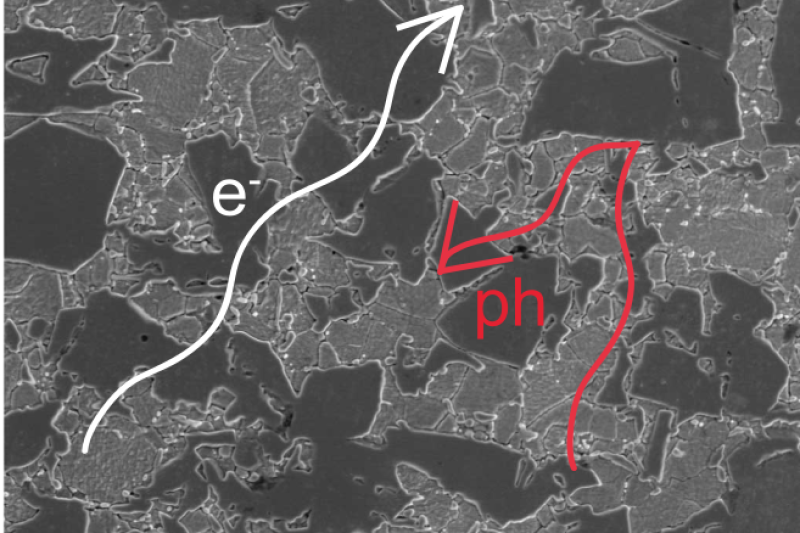
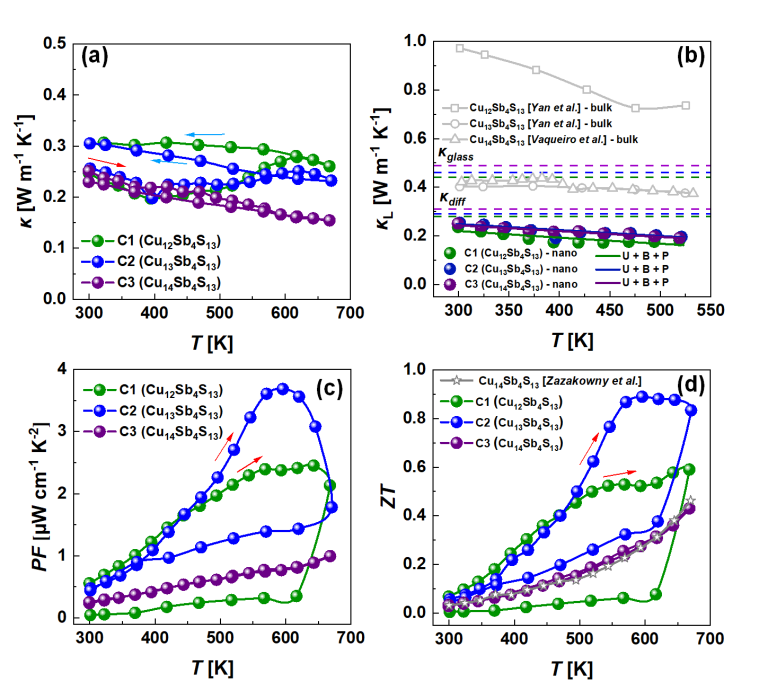
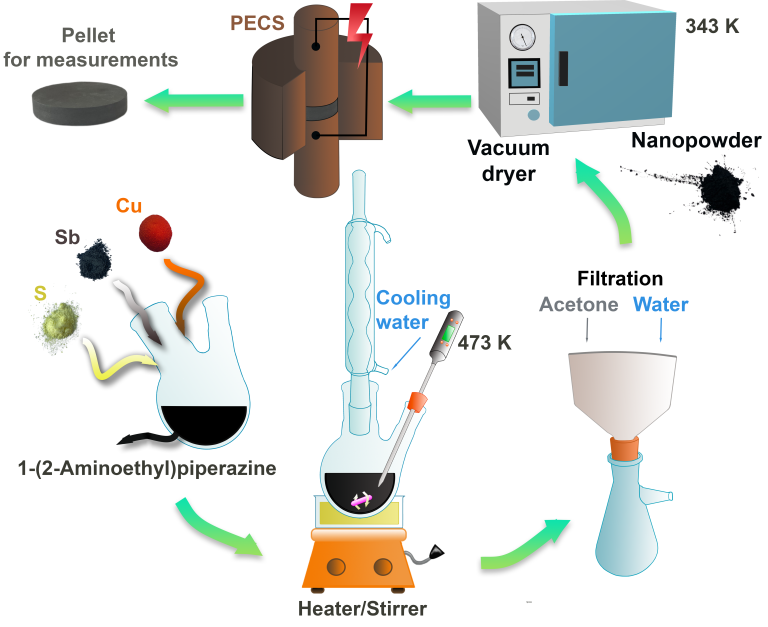
2. Synthesis and characterization of new materials with specific electronic and crystal structures (e.g. skutterudites, argyrodites, tetrahedrites, silicides, rock-salt structure semiconductors, and other) for energy conversion.
3. Elastic inorganic-polymer composites for biosensors and microgenerators
Polymer-based thermoelectric materials are particularly interesting to wearable devices due to their low density, good flexibility, easy processability, and low toxicity. Furthermore, the transport properties of the thermoelectric polymers can be effectively modified by mixing the polymer matrix with the inorganic components. Such composites usually demonstrate even better thermoelectric performance compared to the initial components.
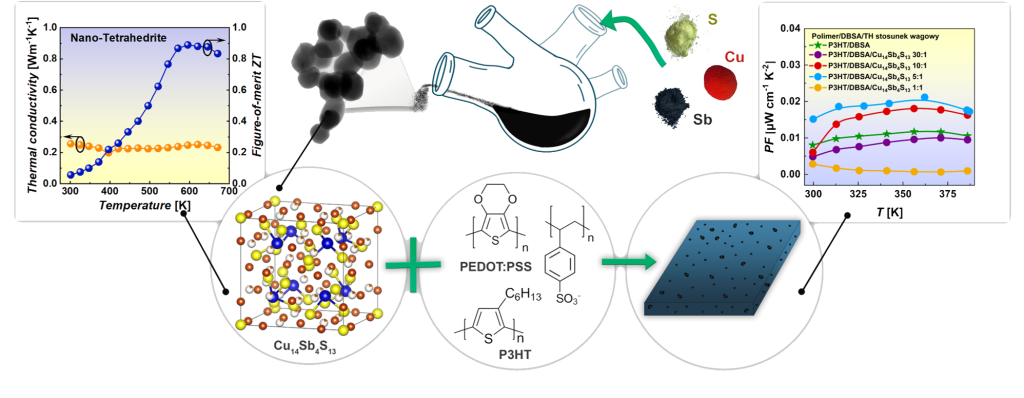
4. Hybrid and high-temperature ceramic materials for interconnectors and substrates of TE modules
Manufacturing of high thermal conductivity and electrical insulation substrates based on oxide films for thermoelectric modules. Covering of thermoelement legs by antidiffusion and commutation layers, using magnetron-sputtering technology and chemical methods.

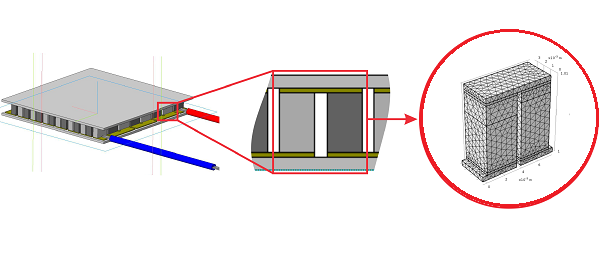
5. Numerical design and fabrication of high-efficient TE modules for cooling and power generation.
Development of thermoelectric cooling and power generation modules based on high effective traditional and functional graded materials. Simulation of heat and mass transport processes in application to thermoelectric energy conversion, using numerical method of finite elements. Fabrication and investigation of thermoelectric modules on the modern automated equipment with computer software for each of technological manufacturing stage.
6. Design and development of prototypical devices for waste heat recovery and conversion of renewable energy

